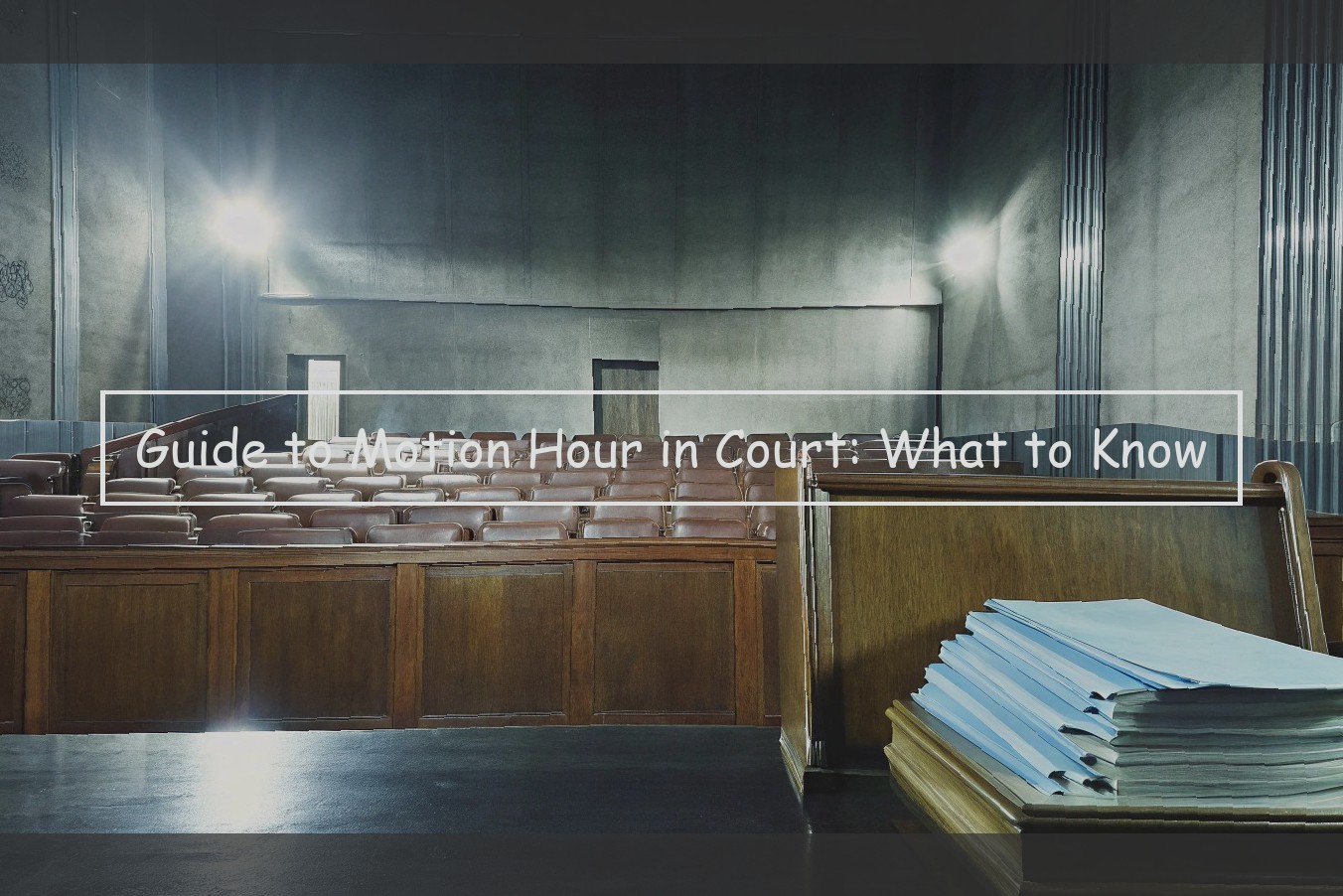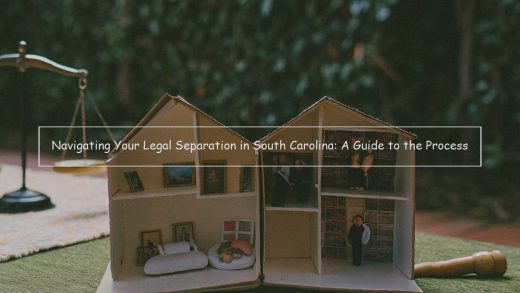
Overview of Motion Hour
Every week, civil courts allocate a specific window of time to hear motions. This designated period is known as "motion hour." During this hour, lawyers and other litigants can show up with their motion papers (and sometimes even present oral arguments in some jurisdictions). Courtrooms are usually packed during this time, so much so that you often have to sign in and wait around to have your case called. Even though there are still judges and staff present to address motions, the courtrooms can resemble the waiting room of a DMV office – lots of people, lots of paperwork, lots of waiting. It is not uncommon to see a long line of people outside of the courtroom waiting to get a seat, even when the courtroom is wildly oversized with more available seats than people in the room. The judge will call up the next motion on the calendar, and the arguments begin. Lawyers will be interrupted because their time has run out, or because opposing counsel just started talking even though they aren’t entitled to present oral argument (that’s what we call it when you get to verbally explain the motion to the judge during motion hour). You will see lawyers who were prepared for the arguments, and others who clearly have no idea what they’re doing . People will look confused and disorganized, like they just walked into a random courtroom and not the one they were supposed to be in.
Motion hour is probably the most misunderstood aspect of the civil litigation process because it does not appear to make much sense from the perspective of an outsider. Lawyers get turned away when they try to file late-moving papers. But why can’t you file your papers at the last minute? Well, imagine if everyone who wanted to file papers waited until the last second. It would be impossible for the court to review all of the documents (and other parties’ "oppositions") before having to make a decision. The point of motion hour is to allow the court to have as much information as possible when deciding the motion. That is why the court requires all parties to submit their papers on the particular deadline set by the court – it allows them to have the briefings in advance so they can read them beforehand and have time to think about them. Presenting papers randomly at the last second would defeat the entire purpose of motion hour, and, in extreme cases, might even result in waiver of your arguments – something you should absolutely avoid, especially for an important law and motion hearing.
Types of Motions Heard
Depending on the Court, motions to dismiss, motions for summary judgment and procedural motions may be addressed at motion hour. The District of Columbia Court of Appeals believes that its rules provide sufficient opportunity for counsel to address issues presented in a motion. Virginia and Maryland allow either party to present motions on the day that the case is called in court. Motions for reconsideration pursuant to Rule 25A for the District of Columbia, Rule 1:1 for Virginia and Rule 8-204 for Maryland are routinely considered by the Appeals Court during motion hour.
Courtroom Approach on Motion Hour
During motion hour, all motions on the calendar are addressed by the Court. The first case on the calendar is called and the attorneys briefly state their positions on the various motions. Depending on the judge, a case may be called, and the attorneys simply stand and provide the Court with their respective positions.
In more complicated cases with more significant motions, the Court may go through the entire calendar and select the cases on which to hear argument that day. The Court will address each of those motions on the selected cases, and then proceed to the next cases that are to be heard that day. Sometimes attorneys will ask for time to submit the motions if proper time has not been provided. This is not uncommon in divorce matters.
Typically, only the party filing the motion needs to appear at a motion, unless the motion is being heard on notice of cross-motion. If a party on whom a motion was not served wants to appear, that party must have filed an answer with the Court and indicate the reasons given in the answer.
Students from local law schools often appear in court under the supervision of a licensed, practicing attorney.
Motion Hour Preparation
Once an attorney has a clear handle on the motion hour calendar, he or she must begin the more substantive part of preparing for the motion itself. For most motions, the attorney will need to gather necessary evidence or review existing evidence, prepare the necessary argument(s), and then finalize the paperwork that must be submitted to the court. Being thorough in this preparation can avoid delays and other issues later on. For most motions, gathering evidence is a two-step process involving both the client and others not present in the attorney’s office. First, the attorney will need to provide his or her client with a list of items that will likely be needed. These may include any letters, emails, or other correspondence from the other side, copies of the original Agreement between the parties, photos, and anything else the client believes may be important to the case. The attorney will review these items and may ask additional questions of the client to proceed with preparing the motion. The second part of the process involves gathering and preparing additional evidence not directly available to the client. For example, if an attorney believes that an inactive business may contain bank accounts, customer lists, or other assets that could affect the outcome of the financial aspects of the motion, he or she may choose to subpoena information from that business. The attorney will then prepare the arguments that are relevant to the motion being filed, whether it be seeking to compel compliance with an original Agreement, challenging specific terms of that Agreement, seeking to resolve enforcement issues, or seeking modifications to alimony, child support, and other terms for any number of reasons. The attorney may want to prepare multiple arguments in a few different ways in order to give the judge different options on how to rule on the issue. Finally, the attorney will prepare the paperwork that is specifically required by the court. This will vary depending on the type of motion, but almost all motions will require an affidavit or certification that presents the evidence in the matter of a sworn statement. This paperwork must be prepared carefully to ensure that the motion complies with court rules and regulations. Any omissions, mistakes, or errors in the affidavit or certification can be grounds for a delay or the judge’s refusal to even consider hearing the motion.
Importance of Motion Hour Rulings
It is not an understatement to suggest that decisions made during motion hour can have a significant impact on the progression of a matter, and on the ultimate outcome.
These motions may include motions for basic procedural relief that would make it inconvenient if granted, but are not in any way fundamental to the litigation (such as a motion to adjourn a discovery appointment).
However, there are many motions on the motion hour that will actually dispose of a claim, or potentially and definitively dispose of a matter altogether. Motions to strike pleadings, for default judgment, for summary judgment, for the granting of a Certificate of Appointment, for the appointment of a Receiver, to Set Aside a Sales Agreement, to Strike a Writ of Seizure, for a stay of proceedings, and to approve a sale all represent the type of substantial motions that are heard during motion hour. Of course this is not an exhaustive list.
One never knows when a client or opposing party is not going to pay their bills, and if a creditor’s application for a bankruptcy order is heard and granted on motion hour, it has the potential to have a devastating and immediate impact on a bankruptcy applicant.
Some motions on motion hour relate to grant issues. For example , a motion for a substitution of a party or an Order to Determine Trial Issues. Whereas some motions may themselves dispose of a claim or action (as discussed above), other motions may provide a party with the opportunity to in effect provide evidence or submissions to the court that will inevitably change the outcome of a matter. The disclosure of these materials at motion hour may change the position of a corporate party in a dispute entirely, and result in a settlement that may not otherwise have occurred.
On occasion there can be a significant divergence of strategy between parties on the conduct of motions on motion hour. One party might have a matter well-prepared for court, with all documents, arguments, and authorities ready for the judge’s determinations; while the opposing party might come ill-prepared, without the necessary documentation, and make a bland, agnostic submission to the Court.
The obvious concern is that the moving party (whether plaintiff, defendant, or otherwise) might not actually achieve a resolution of their matter.
Furthermore, a party coming ill-prepared may quickly find themselves "on the wrong side" of a motion if the judge determines that their strategy was inappropriate.
Some people have unique experiences in dealing with motion hour at the Quebec Superior Court. Perhaps you would like to share them with us?
Common Issues and Considerations
Time constraints are the most frequent challenge faced during motion hour. You have a very limited amount of time, usually around five minutes, to address the Court (or in the alternative, to put your position before the Court in an affidavit). In addition, after you have filed your motion and forwarded the papers to the responding party, you are then required to give notice of motion to the other side and then wait at least 3 days before bringing your motion. This means that if you are the responding party, you’re stuck for quite a while even if you are unhappy with a motion that has been filed against you. When it is time for court, you then have a short amount of time to both (1) review the affidavits and (2) present your case, which is extremely difficult because of the lack of time to prepare.
The strategic considerations of motion hour revolve around how to use the limited time to win your motion. The Judge is every bit as strapped for time as the litigants, and therefore motions are often not taken as seriously as they should be. Make sure you do not fall victim to this by making every piece of paper you submit count: cover letters are read and will make an impression on the Judge. Grammer and formatting are important, and organization, clarity and conciseness are essential. If your papers are unreadable or unclear there is a very large risk that you could lose on motion hour simply because the judge could not make heads or tails of your papers.
Conclusion: Making the Most of Motion Hour
As the adage goes, an ounce of prevention is worth a pound of cure, and this is equally true for navigating motion hour. The most effective way to walk away with agreement night-of is to handle your motion issues before you step into court. Unfortunately, for the problems that do require express permission from a judge, there are a number of practices you can leverage to ensure that you leave the courthouse with a resolution that works for you, your family, and the Department of Child Services. Primarily, these practices come down to preparation, professionalism, and transparency. Preparation is paramount when it comes to a successful scheduling conference or motion hearing . The sooner you review your trial record and the actions that have been taken, the more time you’ll have to understand the circumstances at hand and adjust accordingly. Be sure you also know the locations and hours of both the DCS and Court so you’ll be ready to move forward quickly. Professionalism and transparency are key components of motion hour. You’re not here to share blame – you’re here because the resources are available to move forward with a solution. Present all arguments in a level manner, clarify why you believe a particular course of action is good for your child, and above all, keep an open mind. With these practices, you’ll be empowered to successfully navigate motion hour and reach an agreement that keeps your family together, your children safe, and your peace of mind assured.



